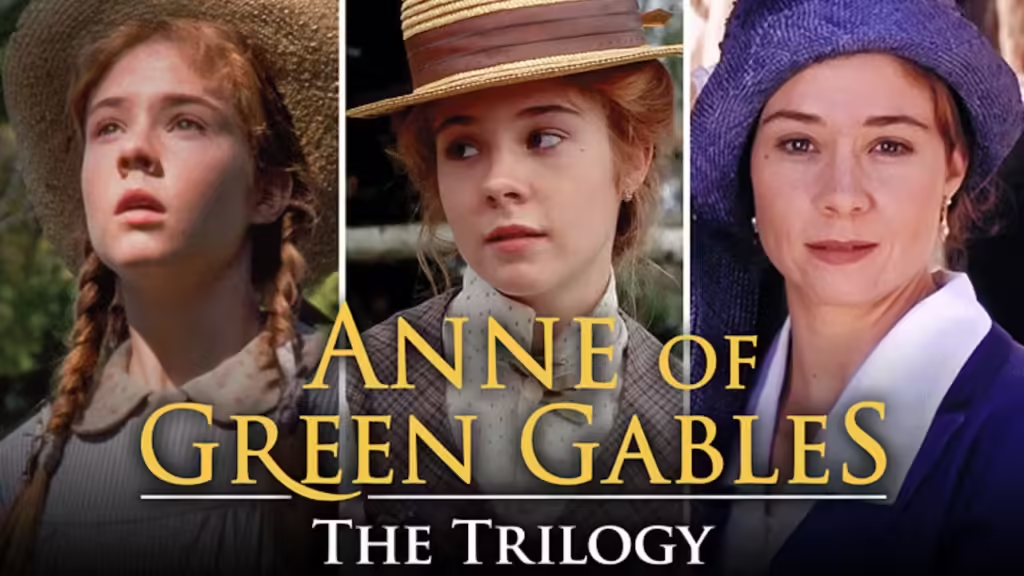Introduction
Trilogies have always held a special place in the world of storytelling. But what exactly is a trilogy, and why do they captivate audiences so profoundly? A trilogy is a series of three related works, often seen in literature, film, and other forms of media, that together tell a complete story or explore a common theme. The power of three is not just a random choice; it has deep roots in human psychology and cultural tradition. Let’s dive into the enchanting world of trilogies and uncover why they hold such enduring appeal.
The History of Trilogies
Ancient Roots
The concept of trilogies dates back to ancient times. In ancient Greece, playwrights would often present three plays in a sequence, known as a trilogy, during dramatic festivals. These trilogies were usually connected by a common narrative thread, offering a complex and multifaceted exploration of themes and characters.
Evolution through the Ages
As storytelling evolved, so did the structure of trilogies. In the Middle Ages, trilogies appeared in epic poetry, while the modern era has seen trilogies expand into novels, films, and even video games. Each iteration of the trilogy has built upon the foundation laid by its predecessors, adapting to the tastes and technologies of the time.
Why Trilogies?
The Rule of Three
The “rule of three” is a principle suggesting that things grouped in threes are inherently more satisfying, effective, and memorable. This rule is deeply ingrained in our psyche, making trilogies a natural and appealing way to structure a story.
Psychological Impact on Audiences
Trilogies create a rhythm that resonates with audiences. The three-part structure allows for a beginning, middle, and end, which mirrors the natural progression of events in our lives. This structure provides a sense of completeness and closure that is deeply satisfying.
Types of Trilogies
Sequential Trilogies
Sequential trilogies follow a linear narrative, with each installment building directly on the events of the previous one. This type is common in both literature and film, providing a continuous story arc that keeps audiences engaged from start to finish.
Thematic Trilogies
Thematic trilogies consist of three works connected by a common theme rather than a continuous storyline. Each installment stands alone but explores different facets of the same concept, offering a rich and layered experience.
Anthology Trilogies
Anthology trilogies are collections of three distinct stories that share a common setting, characters, or motifs. These trilogies offer variety and depth, appealing to audiences who enjoy different perspectives within a unified framework.
Famous Literary Trilogies
J.R.R. Tolkien’s “The Lord of the Rings”
Arguably the most famous literary trilogy, “The Lord of the Rings” is a monumental work that has captivated readers for decades. Tolkien’s intricate world-building and compelling characters set a high standard for all trilogies that followed.
Suzanne Collins’ “The Hunger Games”
This dystopian trilogy has resonated with a wide audience, particularly young adults. Its themes of survival, government control, and personal sacrifice are woven into a gripping narrative that has left a lasting impact.
Philip Pullman’s “His Dark Materials”
Pullman’s trilogy combines elements of fantasy, science fiction, and theology. Its imaginative storyline and deep philosophical questions make it a standout in the world of literary trilogies.
Iconic Film Trilogies
George Lucas’ “Star Wars” Original Trilogy
The original “Star Wars” trilogy redefined the science fiction genre and became a cultural phenomenon. Its blend of epic storytelling, groundbreaking special effects, and memorable characters has influenced countless filmmakers.
Peter Jackson’s “The Lord of the Rings”
Jackson’s adaptation of Tolkien’s masterpiece brought the epic tale to life with stunning visuals and faithful storytelling. The trilogy’s success has cemented its place as a landmark in cinematic history.
Francis Ford Coppola’s “The Godfather”
This trilogy chronicles the rise and fall of the Corleone crime family, offering a deep and complex exploration of power, loyalty, and betrayal. It remains a pinnacle of American cinema.
Television Trilogies
The Power of Three-Episode Arcs
In television, trilogies often take the form of three-episode arcs within a larger series. These arcs allow for deeper character development and more intricate plotlines within a short span.
Example: BBC’s “Sherlock”
BBC’s “Sherlock” often uses three-episode series to tell tightly woven stories. Each trilogy of episodes offers a self-contained narrative while contributing to the overarching plot of the series.
Trilogies in Video Games
The Mass Effect Series
The “Mass Effect” trilogy is a prime example of storytelling in video games. Players’ choices in each installment affect the overall narrative, creating a deeply immersive and personalized experience.
The Witcher Series
Although not a traditional trilogy, “The Witcher” series’ three main games form a cohesive and engaging story. The richly detailed world and complex characters have earned it a dedicated fanbase.
Crafting a Trilogy
Establishing a Strong Foundation
The first installment of a trilogy sets the stage. It introduces the world, characters, and primary conflict, establishing a foundation upon which the rest of the story will build.
Developing Middle Installments
The second part of a trilogy often deepens the plot, explores character development, and introduces new challenges. It serves as the bridge between the beginning and the end, maintaining momentum while setting up the finale.
Concluding Satisfactorily
The final installment must bring the story to a satisfying conclusion. It ties up loose ends, resolves conflicts, and provides a sense of closure, ensuring that the audience feels rewarded for their investment in the story.
Challenges in Writing Trilogies
Maintaining Consistency
Consistency in tone, character development, and plot is crucial across all three installments. Any discrepancies can disrupt the flow and diminish the overall impact.
Keeping Audience Interest
Each part of the trilogy must be engaging in its own right while contributing to the larger narrative. Balancing individual story arcs with the overarching plot is a delicate task that requires careful planning.
The Financial Aspect
Profitability of Trilogies
Trilogies can be highly profitable due to their ability to build and retain an audience over multiple installments. Successful trilogies often generate substantial revenue from book sales, box office returns, and merchandising.
Risk vs. Reward
However, trilogies also come with significant risks. If the first installment fails to capture an audience, the entire trilogy can be jeopardized. The financial investment required for creating a trilogy is substantial, making the stakes high.
Cultural Impact of Trilogies
Influence on Pop Culture
Trilogies often leave a lasting mark on popular culture. They inspire fan communities and spark discussions that extend far beyond the realms of their original medium. From fan theories to cosplay conventions, trilogies become cultural touchstones that unite people from diverse backgrounds.
Trilogies as Cultural Touchstones
Trilogies often resonate with audiences on a deeper level, tapping into universal themes and emotions. Whether exploring the hero’s journey, the battle between good and evil, or the complexities of human relationships, trilogies offer a lens through which we can examine our own lives and values.
Modern Trends in Trilogies
Expansion into Multi-Platform Media
In today’s digital age, trilogies are expanding beyond traditional mediums. From novels adapted into television series to video games spawning spin-off comics, trilogies are branching out into multi-platform storytelling, offering audiences new ways to engage with their favorite stories and characters.
The Rise of Spin-Offs and Prequels
Spin-offs and prequels are becoming increasingly common in the world of trilogies. These companion works explore different aspects of the original trilogy’s universe, providing fresh perspectives and expanding upon established lore. While some spin-offs serve as standalone stories, others directly tie into the events of the main trilogy, enriching the overall narrative.
Future of Trilogies
Predictions for the Next Decade
As technology continues to advance and audience preferences evolve, trilogies will likely adapt to meet changing demands. From interactive storytelling experiences to immersive virtual reality worlds, the future of trilogies holds endless possibilities for innovation and creativity.
Potential Innovations
Emerging technologies such as artificial intelligence and augmented reality have the potential to revolutionize the way trilogies are created and experienced. Imagine a trilogy where the audience plays an active role in shaping the outcome, or a virtual reality experience that transports viewers directly into the heart of the story. The possibilities are limited only by the bounds of imagination.
Conclusion
In conclusion, trilogies hold a unique place in the world of storytelling, offering a captivating blend of structure, depth, and emotional resonance. From ancient Greek dramas to modern-day blockbusters, trilogies have endured the test of time, captivating audiences across generations. Whether exploring distant galaxies or the depths of the human psyche, trilogies invite us on a journey of discovery, imagination, and wonder.
FAQs
What makes a trilogy successful?
A successful trilogy often balances compelling characters, engaging storytelling, and thematic depth. Consistency across all three installments is crucial, as is providing a satisfying conclusion that resonates with audiences.
How do trilogies differ from other series?
Trilogies are distinguished by their three-part structure, which typically includes a beginning, middle, and end. While other series may have more or fewer installments, trilogies adhere to the rule of three, creating a sense of completeness and closure.
Can trilogies exist outside of fiction?
Yes, trilogies can exist in a variety of mediums, including non-fiction literature, documentary films, and historical narratives. The key is to have three related works that together form a cohesive whole or explore a common theme.
What are the key elements of a good trilogy?
Key elements of a good trilogy include strong character development, a well-paced plot, and thematic coherence. Each installment should contribute to the overall narrative while offering its own unique contributions to the story.
Why are trilogies so popular in storytelling?
Trilogies offer a satisfying balance between complexity and accessibility, providing audiences with a complete and immersive storytelling experience. The three-part structure resonates with human psychology, making trilogies inherently appealing to a wide range of viewers.







